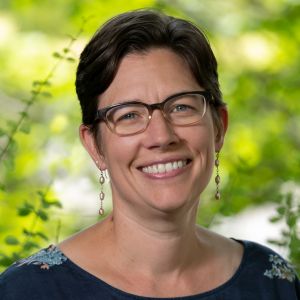VNRC’s Director of Sustainable Communities, Kate McCarthy, discusses her support of the Working Lands Enterprise Fund.
“We hear it all the time, but it’s true: We have something special here in Vermont. We have historic villages, strong communities, beautiful places, clean air and abundant water. Vermont’s villages and vistas, farms and forests are downright iconic – for people who grew up here, people who moved here, and people who visit.
It is worth remembering, though, that the ways Vermont feels and functions are no accident. For decades we have made choices and investments that make Vermont what it is. We banned billboards in 1968. We made it more affordable to keep farms and forests in production, and out of development, by enacting the Current Use program in 1978. In 1987 we established the ground-breaking, and still unique, Vermont Housing and Conservation Board to support affordable housing and land conservation. Recent decades have seen sustained public and private investment in our downtowns and villages. Of course, we also have the major benefit of Vermonters who care about the land enough to build their livelihoods on it.
Despite all the hard work by the public sector, private sector, non-profits, and individuals, our working lands businesses and their owners face major challenges: Whether for milk or wood, Vermont is challenged to participate in global commodity markets, and prices aren’t covering costs. Farm and forest land owners are aging, and many lack family members or others to take on the business or the management of the land. These challenges, and others, threaten the well-being of individuals, communities, and the land base that we take for granted – at great risk to the state’s future.
This means we’re at a critical moment where we need to make choices and investments that will help us keep Vermont special and support Vermonters. Just as we have done in the past, we must find innovative solutions – solutions that fit Vermont’s scale and bring short and long-term benefit for people, communities, and the land.
Fortunately, we have an innovative and effective program in place: the Working Lands Enterprise Fund. This fund, established in 2012, promotes business growth, particularly in the value-added sector, which helps farm and forest businesses increase their profit margins. In its five years of existence, the Fund has had many successes, including creating 485 direct jobs and increasing each business recipient’s annual sales by nearly $60,000. And, importantly, these funds invest in people who are committed to building on Vermont businesses that support farm and forest land – these are jobs that are going to stay local.
Increasing the Working Lands Enterprise at this critical moment would help people, communities, and the land. To accomplish this our Coalition is calling for an investment of $3 million/year for each of the next five years as a way to support business diversification and to help farmers and foresters adapt and prosper in challenging and changing times.
We can’t take for granted the landscape we love, or the people and businesses that make it possible. However, we can support all of these things when we have a diversified working lands economy. Sustained investment in a proven program – the Working Lands Enterprise Fund – is what we need at this critical time.”
Kate McCarthy, AICP
Sustainable Communities Program Director, Vermont Natural Resources Council
kmccarthy@vnrc.org / (802) 451-8348
Kate McCarthy is the Sustainable Communities Program Director at the Vermont Natural Resources Council, where she works to promote smart growth, prevent sprawl, and keep working lands intact. VNRC is part of the Working Lands Coalition, a coalition of farm, forest, historic preservation, conservation and funding organizations united in support of the farm, forest, and value-adding businesses that are at the foundation of the working landscape that benefits all Vermonters. She lives in Montpelier.





